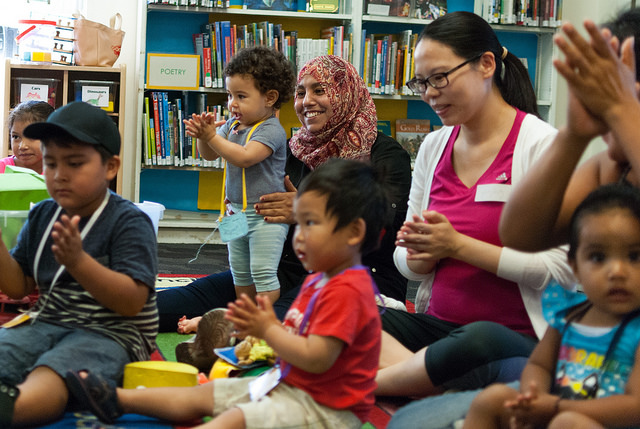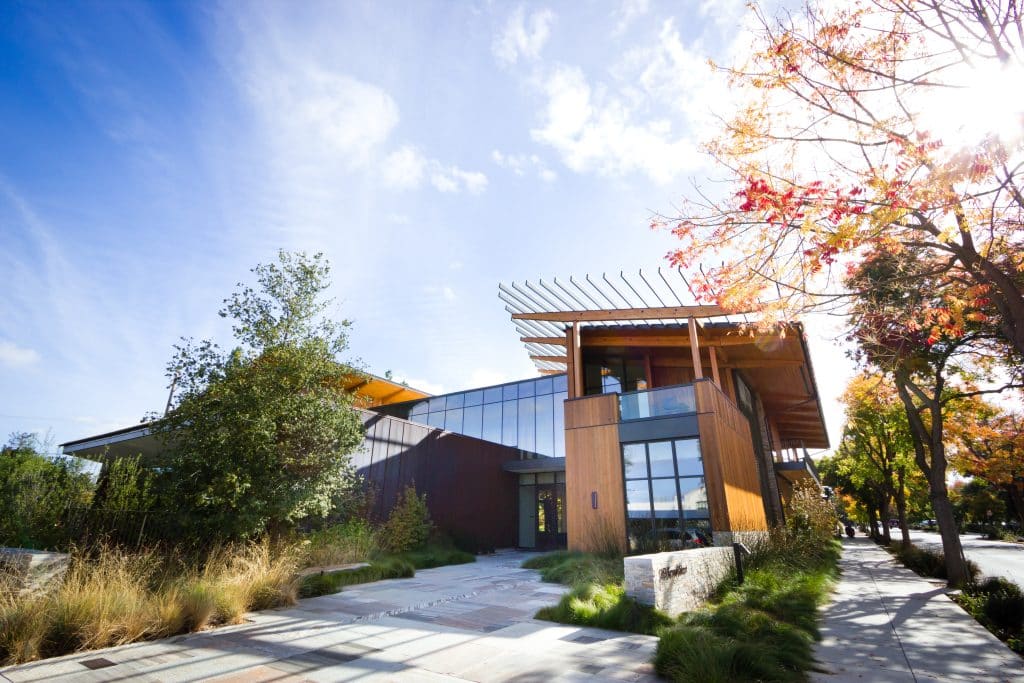At the Packard Foundation, our goal is for children to be ready to succeed in school by age five with good health, self-confidence, social skills, and a love of learning. When we stop to think about what this takes, we recognize that there is a crucial common factor in each child’s success: the adults that surround and support them each day. This is why we are committed to providing tools and resources for adults to create healthy, nurturing, and engaging connections with children across all settings where children learn and grow.
This is particularly important for our youngest learners—infants and toddlers—who spend a significant amount of time being cared for by parents, extended family, friends, neighbors (FFNs) and other informal caregivers. In California, the vast majority of children under two years of age are cared for by FFN caregivers. It is this reality that drives the Foundation’s commitment to exploring how best to support FFN and other informal caregivers.
We firmly believe that providing information to caregivers and connecting them to resources and networks will help them create stimulating and rich learning experiences for the children in their care.
What did we do?
In the first year of our strategy, we worked with grantees to simply understand the state of informal child care settings in California. Through that process, we learned a great deal about FFN caregivers, including their demographics, motivations, and access to resources. A more detailed report of these findings can be found here.
Once we knew more about who FFN caregivers were, we wanted to test our hypothesis that offering them tools and information could help them provide stimulating and rich early learning experiences for the children in their care. So, we launched into the second phase of our strategy by investing in four distinct projects. These projects sought to test strategies that reach and engage FFN caregivers and practices that improve the quality of their interactions with children. Grantees explored the potential to connect with FFN caregivers in natural community gathering spaces such as public libraries and barbershops. They developed innovative community partnerships with stakeholders such as public housing agencies to offer resources and programs. In addition, one project tried connecting with FFN caregivers in a way most of the world communicates these days—by sending them helpful child development information via text messages.
To support the learning process, we engaged the Center for Evaluation Innovation in partnership with Harder+Company Community Research to evaluate the four projects. From the start, it was important to provide each project with evaluation support that would offer real-time feedback to help them improve along the way and build their own internal evaluation capacity.
What did we learn?
As to be expected, we learned that this work is challenging. It’s quite difficult to connect with caregivers who are not part of any one unifying system. It’s even harder to categorize FFN caregivers as a group—their motivations vary drastically as well as how they self-identify as caregivers. While the field refers to them as FFN or informal caregivers, they simply see themselves as a grandma or an auntie, for example. Overcoming the challenges to reach and engage these populations is no easy feat, but lessons from the four projects coalesce around a few important themes.
First, it is important to understand which FFN caregiver population you are trying to reach. Is it specifically grandmas caring for their grandchildren, the neighbor down the street looking after a few children, or some other type of informal caregiver? Knowing your audience, and how they self-identify, is critical for the work to effectively begin.
Second, once you know the type of FFN caregiver you are trying to support, you can start tailoring your outreach strategies. The most effective outreach methods were those delivered: (1) in-person; and (2) through a trusted messenger. While this type of outreach can be time and labor intensive, the benefits of in-person contact can go a long way toward creating valuable connections with caregivers.
Third, providing a connection to an anchor institution (e.g., public library or known gathering location) or community member builds trust and serves as a valuable mechanism for reducing the isolation that so many FFN caregivers experience.
A detailed summary of the evaluation findings and considerations for engaging with FFN informal caregivers can be accessed here.
What is next for the Packard Foundation?
Next, we will use these lessons and others to inform our work as it matures. We are in the process of working with a new set of grantees to build on what works well, engage in testing and learning processes, and ultimately scale efforts that effectively support FFN caregivers. In addition, the new cohort of grantees will continue to: (1) raise awareness about the important role FFN caregivers play in the early learning and development of young children; (2) build FFN caregivers’ early learning knowledge and expertise to better support children’s learning; and (3) improve the quality of care in informal settings to help ensure more children are on track and ready for school.









